The Interdepartmental Equipment Facility
Ultracentrifuge
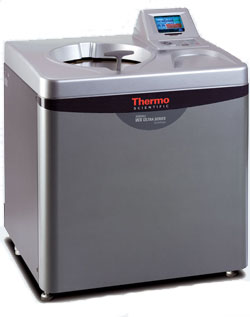
The Sorvall WX 90 ultracentrifuge can run at speeds as high as 90,000 rpm. Rotors spin in an evacuated and refrigerated chamber, to reduce friction and heating of rotor and samples.
Specifications
- model - WX 90.
- Maximum Speed - 90,000 rpm.
- Maximum RCF - 429,643 x g
- Speed control Accuracy - 10 rpm
- Set Speed - 100 rpm to maximum speed, in 100 rpm increments
Centrifugation
Centrifugation is used to accelerate the rate of sedimentation. Particles in solution may gradually settle even under normal gravity, if they are large enough. The settling rate depends on the density, size and mass of the particles. Gravity however is not enough to sediment cellular organelles and macromolecules and a centrifuge is therefore used to accelerate settling of such particles. Spinning the samples at high speed in the ultracentrifuge creates forces that are up to 500,000 times stronger than gravity. The Relative Centrifugal Force (RCF) is indeed measured in i.e. in multiples of g - the gravitational force.
Particles of different size will travel at different rates under a centrifugal forces, and will take different times to sediment. Centrifugation is indeed used to isolate and separate different classes of particles.
Rotors - fixed angle vs. Swinging Bucket
The rotors we offer for use are defined as either 'fixed angles' or 'swinging buckets' .Particles precipitate faster in a fixed angle rotor, where they are first thrown against the side wall of the tube and then slide down this wall to the bottom. Note that friction with the wall might damage some particles such as chloroplasts, whose outer membrane can be easily disrupted. In swinging bucket rotors, particles travel through the liquid straight down the entire length of the tube. The journey is gentler but takes longer. The rotors available in the lab are listed below.
Rotor Tubes
Regular glass centrifuge tubes cannot be used in the ultracentrifuge as they shatter at speeds exceeding 3,000 RPM. Tubes made of Corex-glass can handle speeds up to 18,000 RPM and polypropylene or polyethylene tubes are good for speeds up to 20,000 rpm. For higher speeds use polyallomer tubes. These tubes are more expensive but they are reusable. They are chemically inert and have smoother walls. Thin-wall tubes must be run full and should be properly capped and sealed. Thick-wall tubes should be at least half full. All tubes should be examined for cracks. Tubes may not leak before the run but the cracks will open under the centrifugal forces.
Speed Calculator
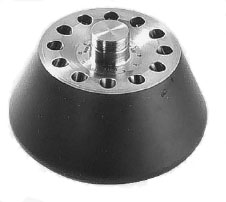
The TFT 80.2 Rotor
- Tubes: - 12 x 2 ml
- Maximum Speed: - 80,000 rpm.
- Maximum RCF - 429,643 x g
- Radius (r max) - 6.01 cm
The 50 Ti Rotor
- Tubes: - 12 x 13.5 ml
- Maximum Speed: - 50,000 rpm.
- Maximum RCF - 226,000 x g
- Radius (r max) - 8.08 cm
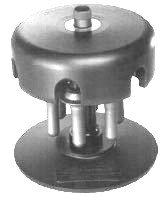
The AH-629 Rotor
- Tubes: - 6 x 17 ml
- Maximum Speed: - 29,000 rpm.
- Maximum RCF - 155,846 x g
- Radius (r max) - 16.59 cm
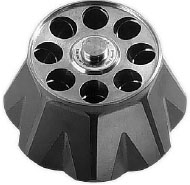
The T-865 Rotor
- Tubes: - 8 x 36 ml
- Maximum Speed: - 65,000 rpm.
- Maximum RCF - 429,459 x g
- Radius (r max) - 9.10 cm
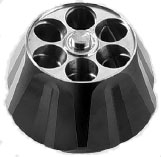
The A-641 Rotor
- Tubes: - 6 x 100 ml
- Maximum Speed: - 41,000 rpm.
- Maximum RCF - 186,453 x g
- Radius (r max) - 9.93 cm